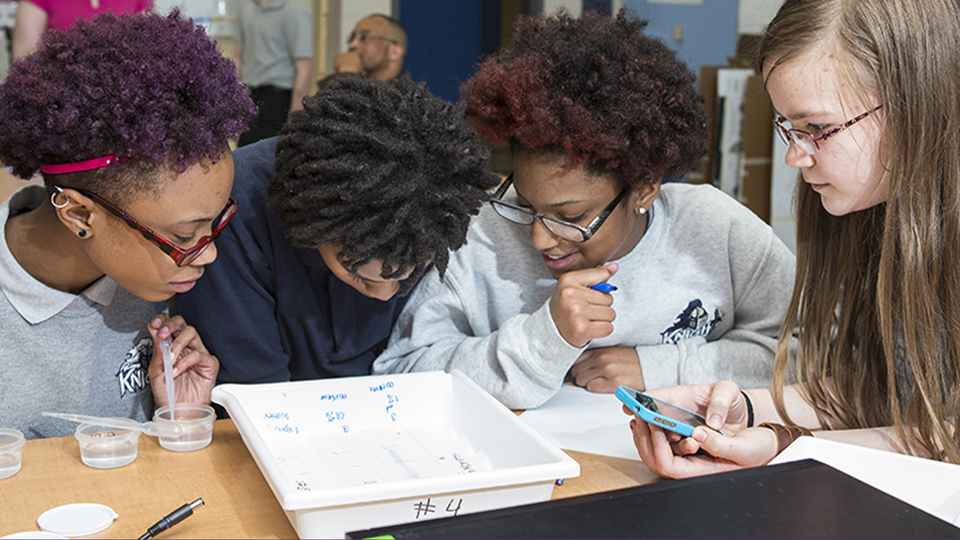Seeing Is Believing…
 Photo courtesy of Temple University and East Carolina University | Riverside Middle School.
Photo courtesy of Temple University and East Carolina University | Riverside Middle School.
Studies have shown that when students know what the consequences are for risky behavior, they are less likely to engage in that behavior. This series of hands-on, inquiry-based lessons uses living animals, planarians, to model human physical responses to chemicals of addiction—some of which are found in foods.
Over 300 teachers across four states have been trained, with more than 8,000 students participants. Quotes from students and teachers about the program are indicative of its success.
Students
Me, personally, I know I don’t want to smoke, but looking at how the planarian reacted, I know why my thought of not smoking was a good choice, Bradley said. It makes you think, That could happen to me.
It’s crazy how planarians and people both will go to scary places to get drugs!
Teachers
They could see the effects on something so small and relate it to how it impacts humans.
My class was very divided on the use of substance[s] before we began the program. Students that were against substance use had their attitudes reinforced due to the program and provided them with more of a voice during their group discussion as they had real data in front of their eyes to back up their stance. Students that positively support substance use definitely were taken aback by the data that they were confronted with.
Seeing the planarian’s reactions to the various drugs, including sucrose and caffeine, changed student perspectives on what a drug is and how their choices affect their health.






